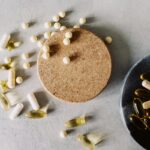The Bubble Gut Diet Plan: Food, Fasting, FODMAP?
Healthy’s Summary
If your belly constantly feels bloated, stretched, or uncomfortably full, you might be dealing with something often (and informally) called bubble gut. While it’s not an official medical diagnosis, “bubble gut” usually describes a mix of bloating, gas, and visible abdominal distension. And yep, diet plays a huge role.
The good news? There is a way to get relief. A smart, targeted bubble gut diet plan can help reduce your symptoms, comfort your belly, and make eating feel like a joy again instead of a gamble. We’ll walk through what foods to skip, what to embrace, and how to figure out which ones are messing with your gut.
What is a “Bubble Gut,” Anyway?
Let’s start here, because the term gets thrown around a lot. “Bubble gut” is a colloquial term people use when their stomach looks puffed up or feels full of air, even when they haven’t eaten much — and it’s often the very thing that drives people to search for a bubble gut diet plan. It can come with gurgling sounds, burping, or uncomfortable pressure.
Often, it’s not fat but bloating, which could stem from:
- Gas buildup from certain foods
- Overeating or eating too fast
- Food intolerances (like dairy or gluten)
- Gut bacteria imbalances
- Constipation or other digestive slowdowns
The fix? It often starts on your plate.
What Should a Bubble Gut Diet Plan Look Like?
There’s no one-size-fits-all approach, but here’s a general roadmap:
1. Focus on Low-FODMAP Foods
The Low-FODMAP diet is a go-to for reducing digestive bloating. It limits short-chain carbohydrates that are poorly absorbed in the small intestine — and notorious for causing gas.
Good choices:
- Zucchini, spinach, carrots – These vegetables are lower in FODMAPs and gentler on digestion compared to their cruciferous cousins. They help reduce gas and bloating without sacrificing nutrients.
- Quinoa, rice, oats – These grains are well-tolerated by most people with sensitive guts. They’re easy to digest and provide steady energy without feeding problematic gut bacteria.
- Eggs, firm tofu, chicken – High in protein but low in fermentable carbs, these are excellent options for avoiding digestive discomfort while staying full.
- Blueberries, strawberries (in moderation) – These fruits are sweet, satisfying, and lower in FODMAPs compared to apples or watermelon. Just watch portion size to avoid overdoing fructose.
Foods to limit:
- Garlic and onions – These are high in fructans, a type of FODMAP that ferments quickly in the gut, producing gas and bloating in sensitive individuals.
- Apples, watermelon, pears – While healthy, these fruits are rich in fructose and polyols, which can trigger fermentation and water retention in the intestines.
- Wheat and rye (especially in breads) – These grains contain fructans and gluten, both of which may lead to digestive distress in people with sensitivities.
- Beans, lentils – High in galacto-oligosaccharides (GOS), these legumes are common gas producers that can worsen symptoms of bubble gut.
Curious about the Low-FODMAP approach? Check out our other article: Low FODMAP Recipes for IBS: What Can I Actually Eat?
You can also check out our Healthy Program at the bottom of this article. It will help you with your personalized Low-FODMAP diet approach that can take into account your personal lifestyle, food preferences, activity levels, and other health conditions that may be playing a role.
2. Watch Sugar Alcohols and Artificial Sweeteners
Think: sorbitol, mannitol, xylitol. These sneak into sugar-free gum, protein bars, and even “healthy” snacks. They’re famous for causing gas and digestive chaos.
3. Rethink Dairy in Your Bubble Gut Diet Plan
Even if you’re not lactose intolerant, dairy can be a bloating trigger. Try cutting back and swapping in plant-based milks (unsweetened almond or oat are good starting points).
4. Try a Gut Reset Period
Some people see big results by stripping their diet down to basics for a week or two. Think lean proteins, cooked vegetables, and simple carbs. Then slowly reintroduce things to spot the offenders.
Ask Healthy
What Foods Should I Avoid In My Bubble Gut Diet Plan?
Ah, the big question. And honestly? The answer depends on your body. But here are some of the top offenders that show up in people complaining of bubble gut:
- Carbonated drinks (sparkling water isn’t always your friend)
- Cruciferous veggies (like broccoli, cabbage, cauliflower)
- Fried or fatty foods (they slow digestion way down)
- Processed snacks (especially with emulsifiers or gums)
How to tell what’s causing your issues? Keep a food + symptom log for at least 5 days. Track:
- What you ate
- When you ate it
- When bloating started
- Severity of your bloating (1–10 scale)
Even better? Use a smart app that tracks trends and helps you spot patterns.
The Takeaway
A bubble gut diet plan is less about restriction and more about discovery. Once you figure out what your gut loves (and hates), you can shift from reactive fixes to proactive eating.
Want to make this easier on yourself? The Healthy app can help you create a personalized eating plan based on your symptoms, food history, and lifestyle. Just hop into the chat function and tell it what’s going on — it’ll guide you from there.
Because the only thing worse than a bloated belly is feeling like you have to solve it alone.
Want to dig deeper?
Discovering Food Triggers: The FODMAP Approach
This program breaks down what FODMAPs are (fermentable sugars in foods) and guides you through an elimination process to identify which foods may be causing your symptoms. These high-fermentation foods can trigger symptoms such as bloating, abdominal cramps, and diarrhea. This program helps you identify triggers, track symptoms, and create a personalized low-fermentation (low-FODMAP) plan to reduce discomfort and improve digestion.
Enroll in one of Healthy’s Programs to log, track and learn more about your Health, one conversation at a time.
Learn More




